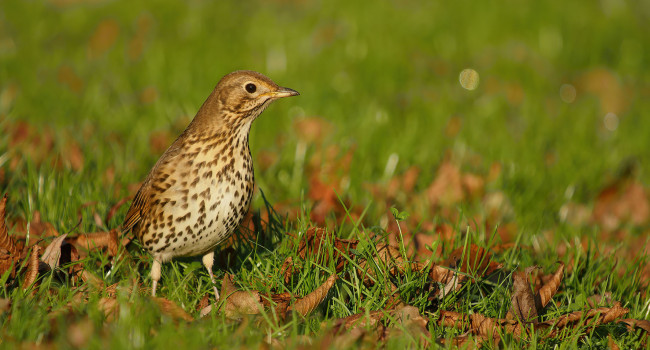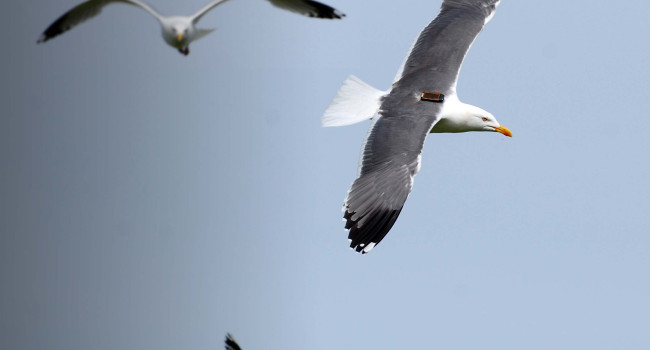Frequently raised issues
Thanks to everyone who took the time to send in their thoughts, comments and concerns about farmland birds and the reasons for the decline. Due to the sheer number of responses and the time needed to reply individually, we haven't been able to respond to each and everyone of these emails or letters but we have put together some comments on the frequently raised issues that many of you have mentioned:
Causes of decline
For most of the big declines in farmland birds, including Skylark, Grey Partridge, Yellowhammer, etc., there has been a lot of research and we have a good idea about what caused the changes. In addition, importantly, we know a lot about which parts of the life cycle are most sensitive and tend to drive population change – for most passerines, over-winter survival is most important. The main focus of the research we want to do is to investigate why the efforts to address the causes of decline have not worked and what can be done instead.
Pesticides
First, there is no reason to suspect that pesticides directly explain the problems with agri-environment schemes; if anything, they usually reduce pesticide use, so if there are negative effects of pesticides, they would tend to make the schemes work better. In terms of driving declines, possible negative effects of pesticides are much better monitored and controlled than they were in the days of DDT and direct toxicity is very low. However, they are getting more and more sophisticated and efficient, so are leaving less left alive than ever. This might be particularly important with herbicides, which, as well as becoming more effective, have also been so effective for so long that background weed populations and the seeds they leave as food resources are being reduced dramatically. Hence, fallows and stubbles, whether created under an AES or not, may be less valuable for feeding birds now than, say, thirty years ago. Similarly, any management that relies on the natural regeneration of vegetation (providing invertebrate food and nest sites, for example) is likely to work less well now than it would have done in the past.
Housing pressure
There is no question, of course, that housing development on farmland makes the land unsuitable for many farmland species and that development is increasing. However, to date, green belt legislation has protected a lot of land near to existing towns and cities and the development has been limited in scope: even if local effects have been large, the land covered by development has been too small to have a significant impact on national populations of farmland birds (most of the countryside is still farmland). It is also important to note that there is no reason why housing development should make AES management less effective. Also, if housing development is sufficiently “green”, some species can actually increase: clearly, species like Skylark will disappear, but others like Blackbird, Chaffinch and Goldfinch could actually do quite well.
Road building and car traffic
Much as with housing development, the “footprint” of new roads is small at the scale of the farmland environment as a whole, so they are unlikely to have more than a local impact on farmland birds. Impacts on mammals and amphibians may be disproportionately large, of course, because their movement is disrupted, although mitigation measures such as tunnels should help, in theory. Road traffic has increased as well and certainly causes mortality in birds, but hedgerow and urban-associated species, or those that find food in road verges, are probably most affected: open field species like Skylark and Yellowhammer are unlikely often to come close to roads. In addition, the spatial “footprint” of roads will also affect the scale of any influence of traffic on populations: most individual birds live most of their lives well away from busy roads. So there is a chance that road traffic mortality could be having an important effect on some species, but not many farmland specialists. It is also noteworthy that some species that might be expected to be affected most, like Woodpigeon and Blue Tit, have healthy populations despite these effects.
Lack of insects
As discussed under pesticides above, more efficient chemicals are likely to have had both direct and indirect negative effects on insect diversity and abundance in farmland. This has been confirmed by research and is likely to have reduced food availability for many breeding farmland birds. Set against this, some species, such as Whitethroat, that might be expected to be most affected by this factor, have actually increased in recent years. Also, the evidence for most small passerines, including insectivorous species and those that eat seeds for most of the year but feed their chicks on insects (e.g. buntings and finches), indicates that winter conditions and annual survival are more important in driving population changes than breeding success. Hence, regardless of any reductions in breeding success because of poor insect availability, it is the winter survival (probably largely food availability, either on UK farmland or on the wintering grounds of migrants) effects that are critical in making populations increase or decline. From an AES perspective, as well, it should be noted that, while the changes they produce could be small, many management options will definitely reduce chemical use and increase insect numbers so insect number effects are unlikely to explain the problems with AES options.
If you would like to read more about the Farmland Bird Appeal or make a donation you can do so here.






Share this page